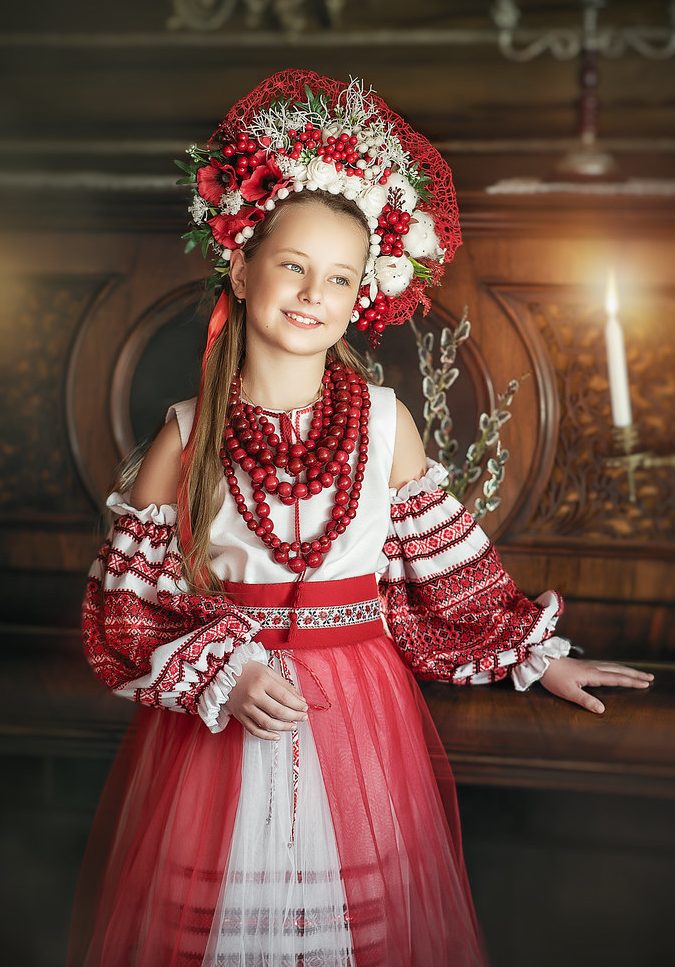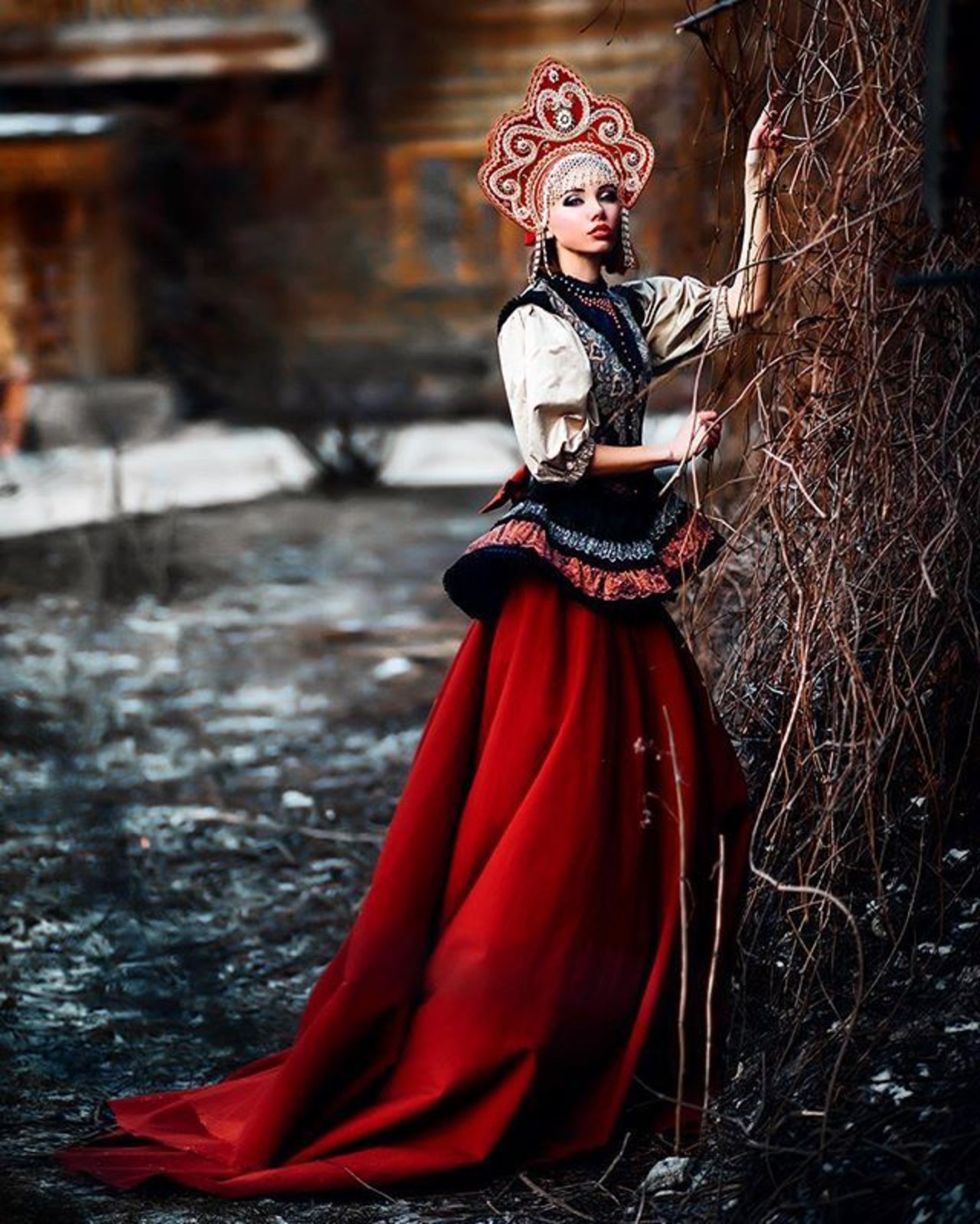
From time immemorial, it turned out that women in Russia were still those fashionistas, a direct proof of this is the female Russian folk costume. Even simple peasant women, not to mention wealthy ladies or merchants, could boast of the contents of their chests, in which dozens of various outfits were stored. As for hats, our ancestors were just crazy about them.
Simple daily ones, embroidered with beads and adorned with shimmering gems - it was simply impossible to list them.
So how did the love of Russian women to dress up come about?
Moreover, it is not easy to dress up, but to create real works of art with your own hands.
Content:
- Chronicle of creation
- Types of outfits of Russian beauties
- Ethno-style clothes for girls
- Purchase or rental
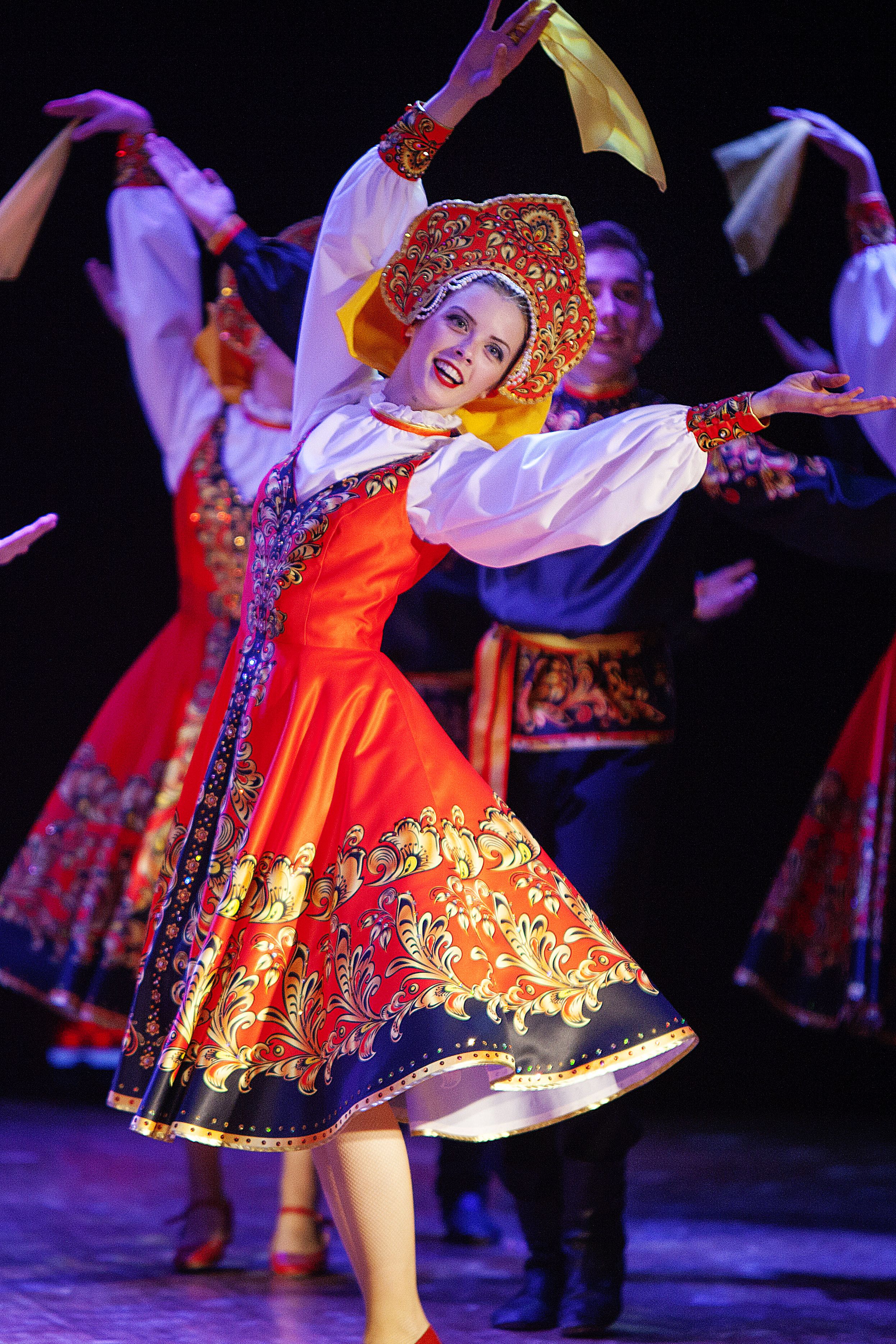
Chronicle of creation
The history of the emergence of a special and unique language of forms, ornaments and colors of Russian folk costume goes back to the 12th century. The harsh Russian winters provided our ancestors with enough free time for needlework.
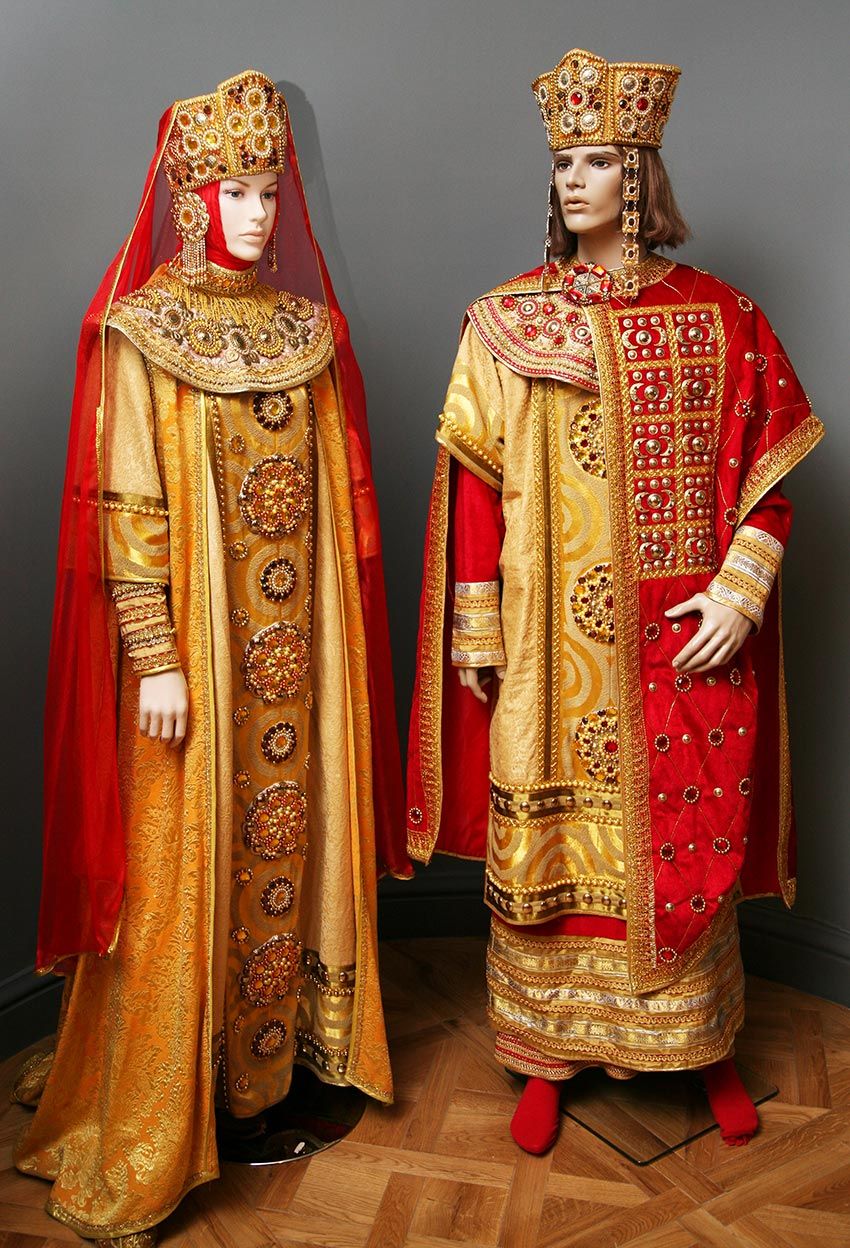
Bright colors served as a reminder of the gentle summer sun and warmed on cold winter evenings. The costumes born in the hands of skilled needlewomen were filled with a sense of universal peace and tranquility, and their ornaments hid the innermost secrets of art.
Did you know that at one time Peter I was forbidden to wear Russian folk clothes? A reformer chasing Europe, only peasants and priests were allowed to wear such clothes. The rest of the population had to dress in a European manner.

It is interesting, but with the same general details, differences in the national dress of different regions are also noticeable. Historically, it is customary to separate the outfits of the northern and southern regions of Russia. As for the central part of the country, most of the clothes were sewn according to northern traditions, and only in some places was the influence of the South Russian craftswomen noticeable.

Distinctive features
So, how did the folk kits of Russian beauties differ from the outfits of women in other countries?
The highlight was their layering. In the outfits of any region, there were many elements of outerwear. She was divided into a cap and a swing.
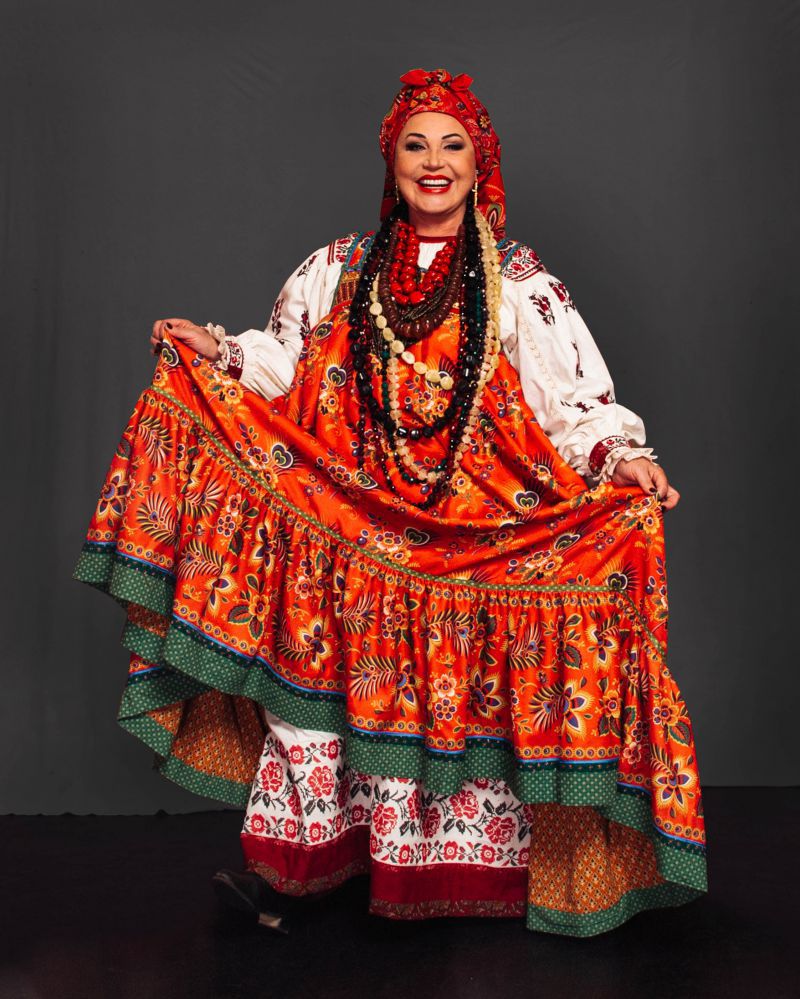
As the name implies, the cap was worn over the head, and the swing, which had a longitudinal slit from the very top to the bottom, was tightly fastened with buttons or hooks.
Also, the costume in Russia was distinguished by its rich decor and a flared silhouette without an accentuated waist.

Interestingly, this diversity led to the formation of a classification of sets, each of which was different:
- High aesthetic level.
- Functionality.
- Feasibility.
- Rationality both in cutting technique and in performance.
So, how did our ancestors dress.
Types of outfits of Russian beauties
So, let's take a closer look at the sets of women's costumes of our ancestors, their differences and the available elements.
In general, in Russia, two options were distinguished:
- North Russian, or, as it was also called, word of mouth. It assumed the presence of a shirt and a sundress. A kokoshnik was obligatory as a headdress.
- South Russian, or the one-to-one. It included a shirt, a skirt (which was called poneva) and a kichka - a headdress.
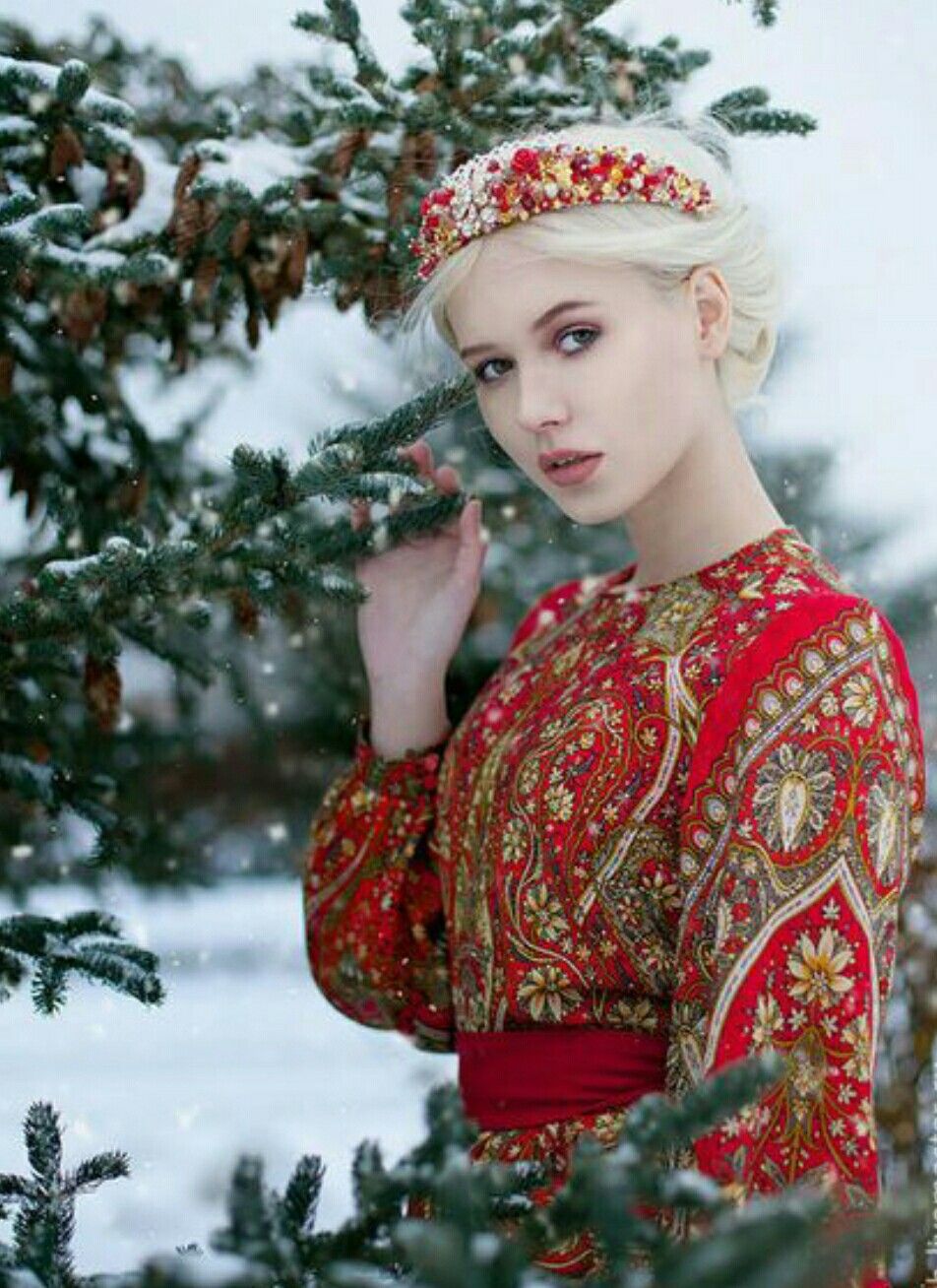
Let's dwell on each element in more detail.First, consider the shirt that was supposed to be worn both in the south and in the north of Russia.
Women's shirt
In addition to their functional purpose, women's shirts carried a deep sense of folk traditions, which were laid in jewelry and decoration.
Despite the fact that the women's shirt was not an outer garment, patterns were still embroidered on it:
- Symbols.
- Horses.
- The Tree of Life.
- Lankan and floral patterns.
- Birds.
All these, in principle, pagan elements were designed to protect our ancestors from the influence of evil forces. Individual shirts of red fabric were also sewn, which protected women not only from evil spirits, but also from all misfortunes.
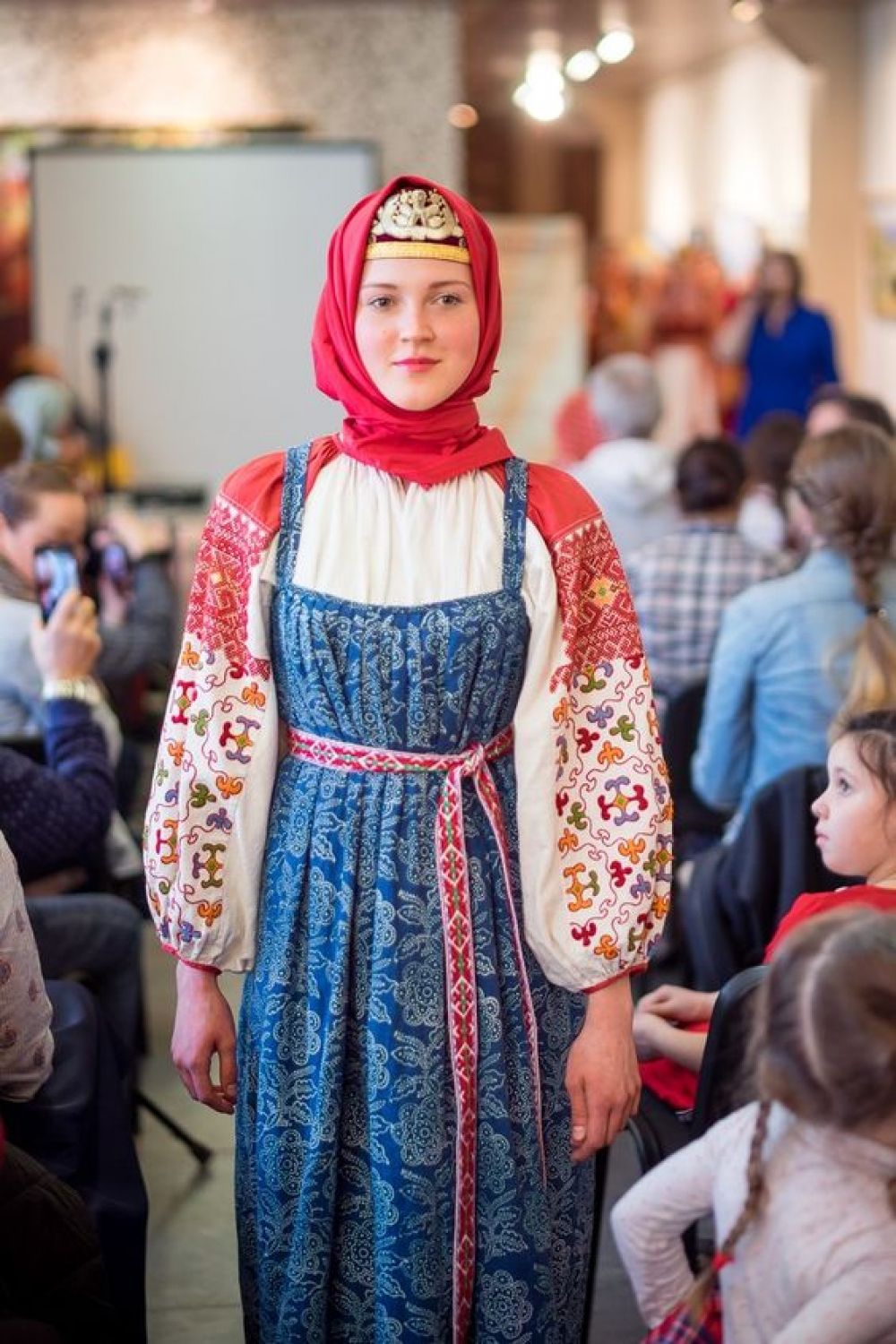
Various natural homespun fabrics were used for sewing women's shirts:
- Linen
- Canvas
- Wool
- Hemp canvas
- Hemp
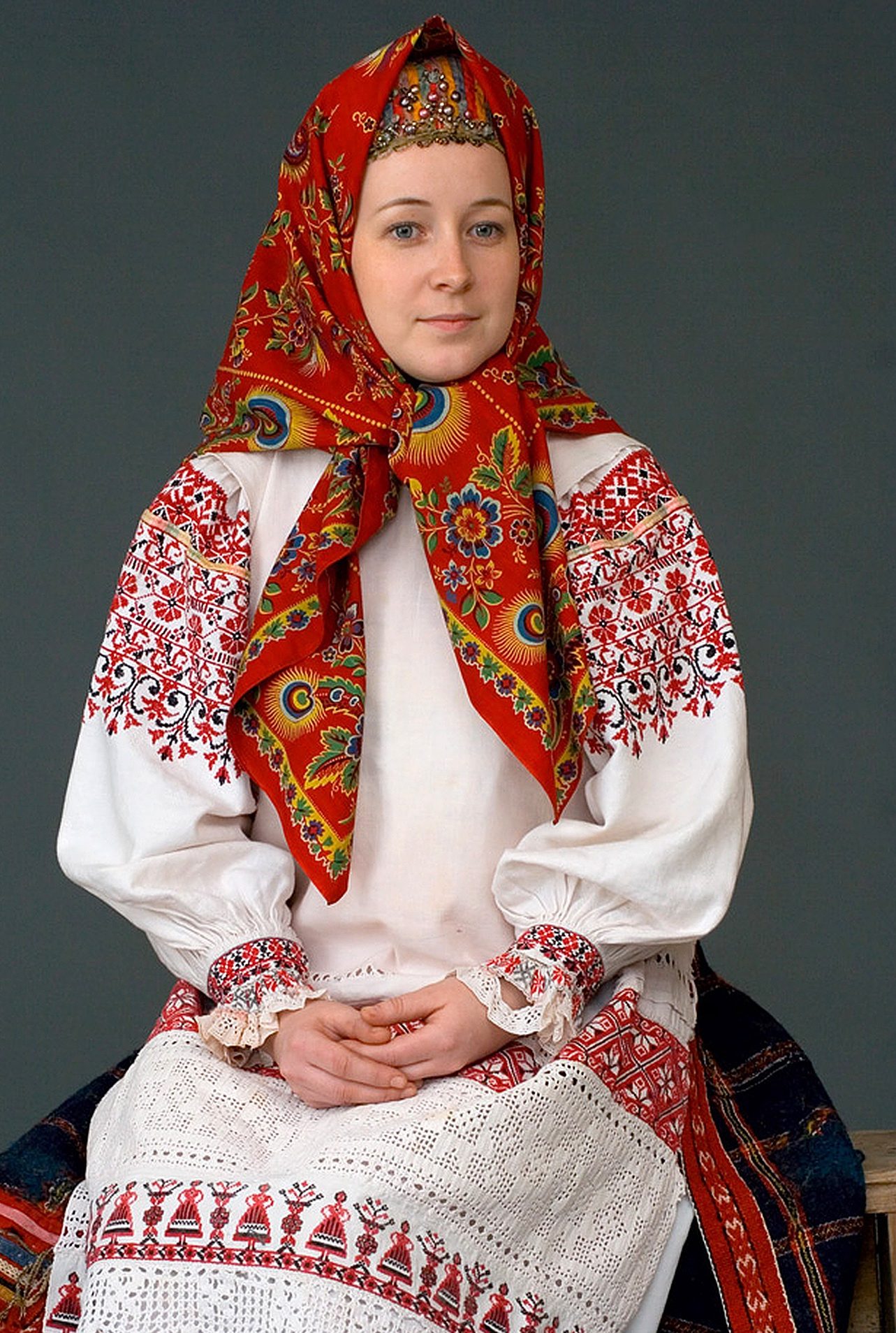
The choice of the material of manufacture directly depended on its purpose, but here there were a lot of options.
Shirts could be:
- Everyday and festive.
- Slanting.
- Wedding.
- Funeral.
There was even a separate type of shirt for nursing mothers. This style differed from others in its specific gathered sleeves.
The length of the women's shirt was different, the styles reaching the hem were called the camp.
Sundress
It was considered the main element of the female set of the northern region of Russia. The most common version of its sewing was considered to be a wide panel, gathered in small folds, which were tucked in with a clothespin on the straps under a narrow bodice.
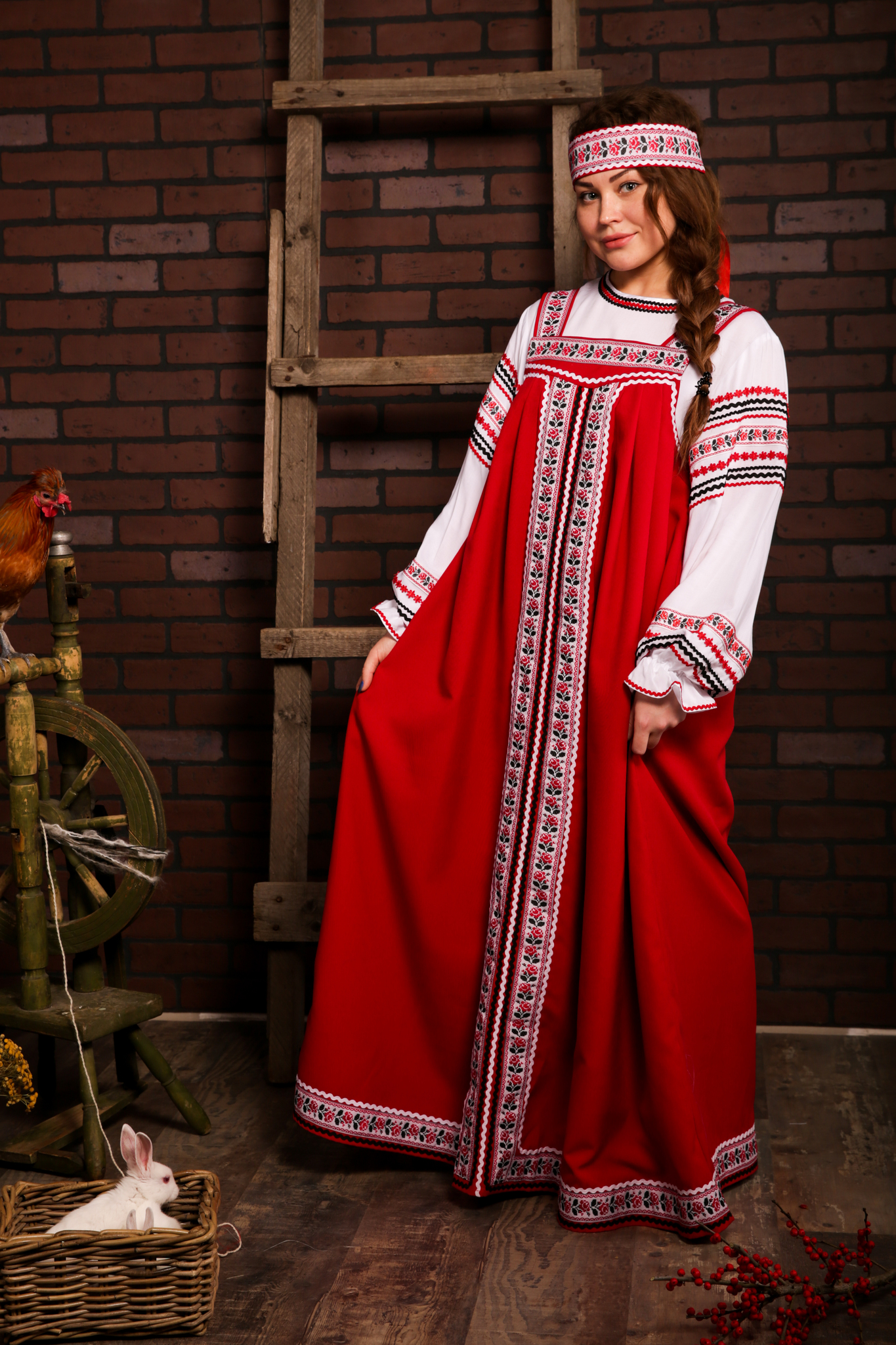
Every self-respecting girl of marriageable age had to have at least 10 sundresses of different colors. At the same time, girls from noble wealthy estates wore sundresses made of silk and velvet fabrics, which were brought from abroad. They were richly decorated with lace, embroidery and braid.
Due to the fact that this garment consisted of several elements, it was quite heavy, especially in festive versions.

There were the following types of sundresses:
- Kosoklinnye - were sewn from sheep wool (hairs) and dyed black with a mixture of oak and alder broths.
- Sayan - a straight satin sundress on the back and sides of which there were small folds. Sayans of red shades were sewn for young people, older women wore blue and black outfits.
By the sundress, it was possible to determine not only the estate from which the girl comes, but also about her social status:
- Married or not.
- Are there any children.
And even the mood of the owner could be recognized by the sundress, since there were both festive and mournful sundresses.
Kokoshnik
The headdress on a solid base had the shape of a fan or a round shield. Depending on the status of a girl or a woman, it could be decorated with beads or beads, braid, brocade inserts. The richest could afford a kokoshnik decorated with precious stones. It was worn by both married women and girls of marriageable age.
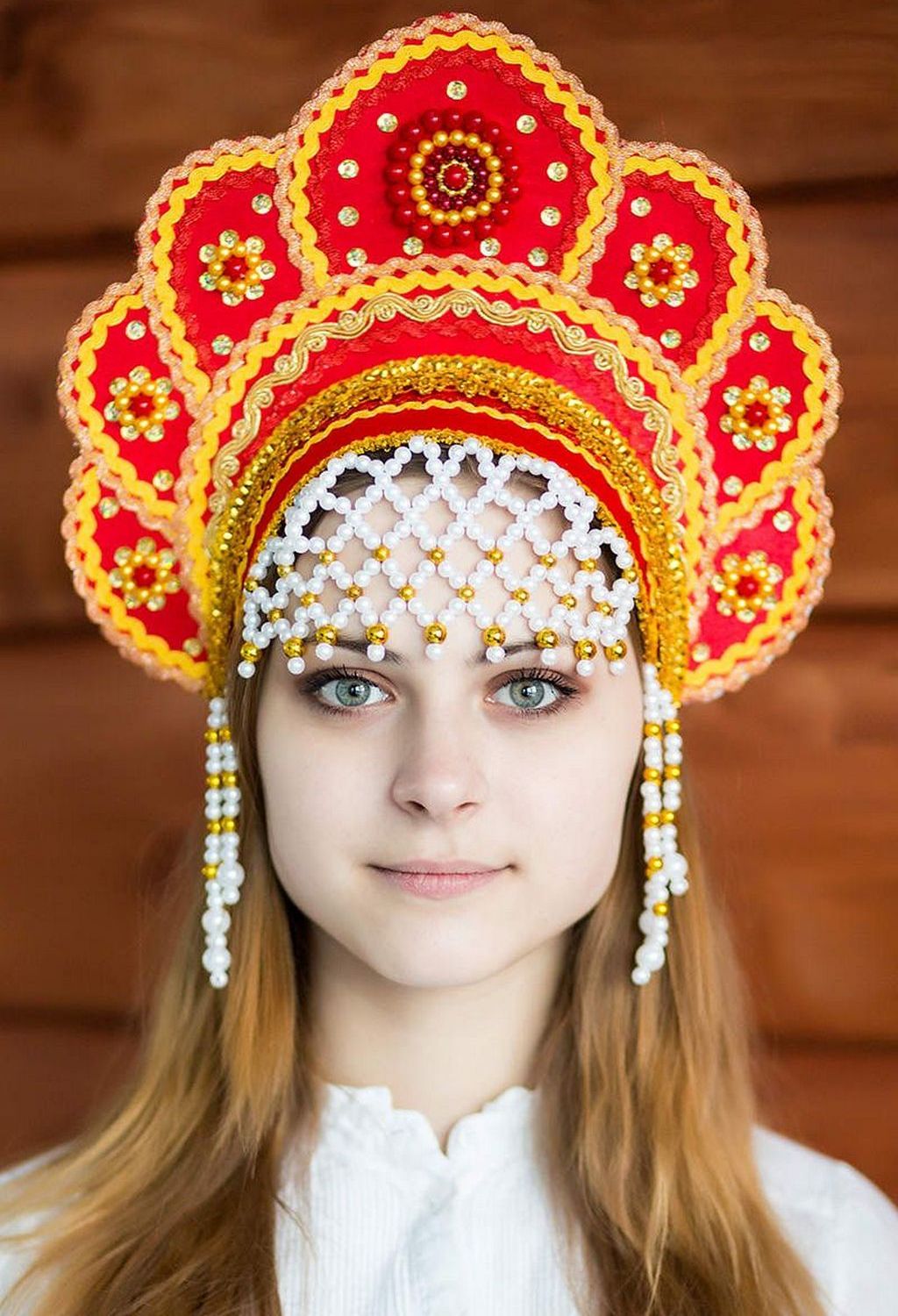
By the shape of the "comb" of the kokoshnik, it was possible to determine which province the girl was from:
- Kokoshniks with arrowheads were worn by residents of Pskov, Saratov, Kostroma
- Kokoshniks in the shape of a crescent denoted Siberian origin
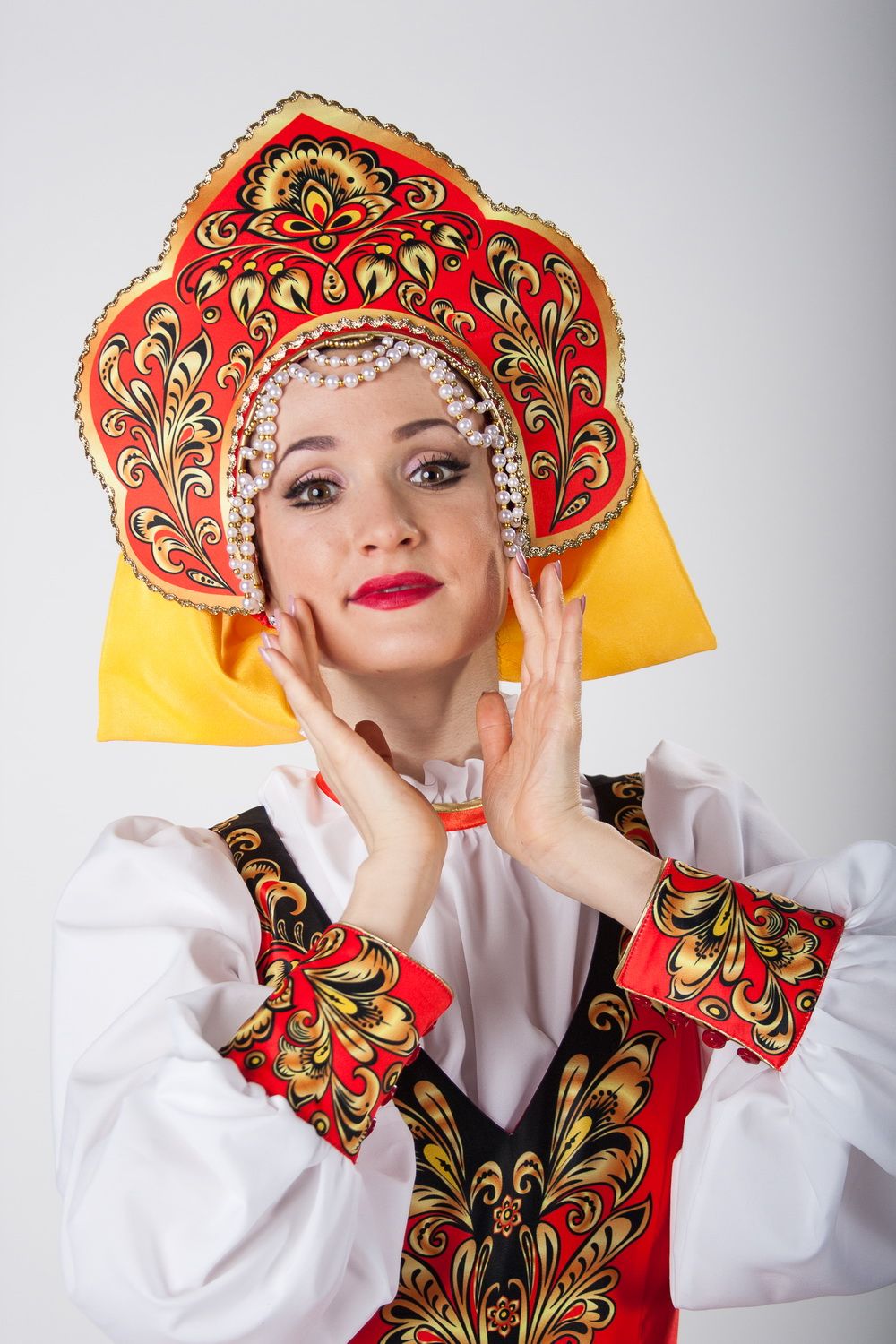
Considering it a talisman, the craftswomen - needlewomen decorated the kokoshnik with ornaments guaranteeing fertility (the image of a frog) and marital fidelity (swans in the S-shape). The back part was especially richly and solemnly embroidered:
- The tree of life - each branch of which marked a new generation
- A pair of birds - a symbol of fertility
Basically, the kokoshnik was a festive headdress; they also wore it for a wedding.
Skirt-poneva
Ponevoy was called the plaid fabric that was wrapped around the thighs. It was fastened at the waist with a woolen cord - a gashnik. They wore it in different ways.In some areas it sank below the waist, in others it rose high under the chest.
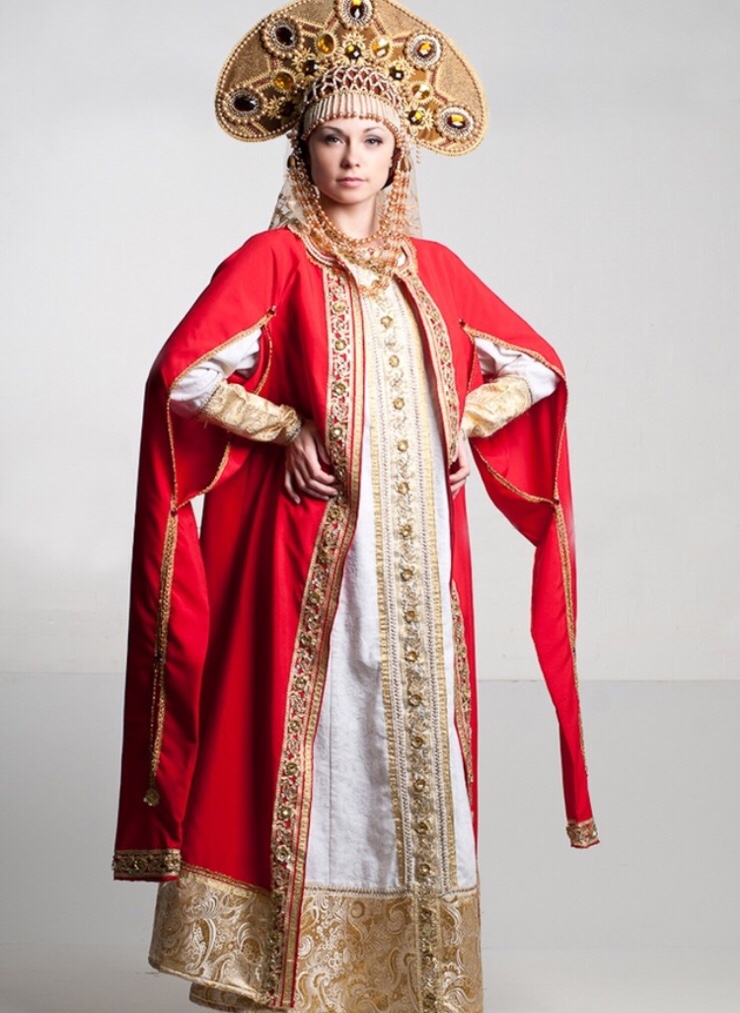
Considering that the looms of that time had a width of about 35 cm, the poneva had 3 panels. On the bottom it was decorated with embroidery and decorative seams, rosettes and sequins. That is, it was not just a skirt, but a real complex decoration.
Kichka
High headdress of a spatula shape. Symbolizes fertility and fertility. It was customary to wear an ubrus (scarf) over it. Reminiscent of an open crown of a kichka, it was decorated with beads, pearls and other precious stones.
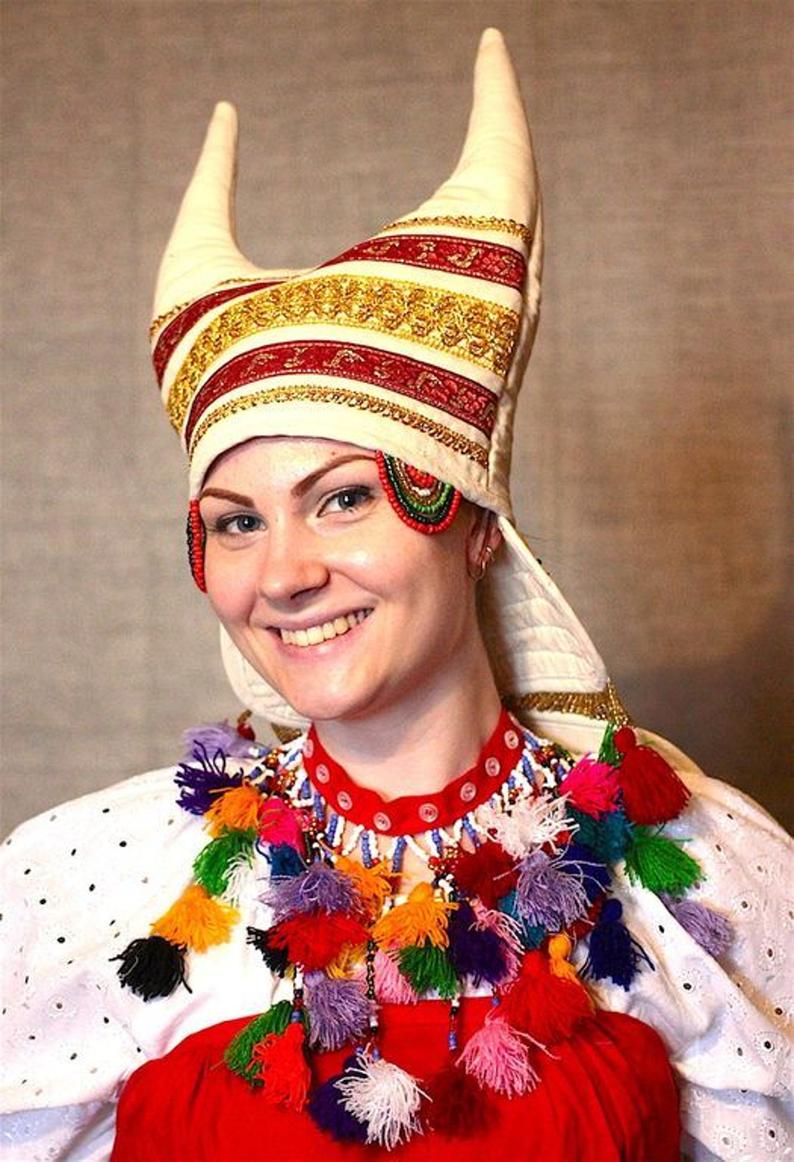
The front part of the kitsch was made of hard materials to shape horns or scapula. For this, birch bark was used most often. The back of the kichka - the cuff, was decorated with beads.
Holiday women's outfits
They were distinguished by richer decoration and more expensive fabrics. We should also dwell on the wedding dresses of our ancestors. They were divided into pre-wedding and post-wedding.
- Pre-wedding was a long dress to the floor. His sleeves were dark, which symbolized the funeral of the girl of her youth and her transition into adulthood.
- The post-wedding was a real masterpiece, bright, colorful, with rich decoration.
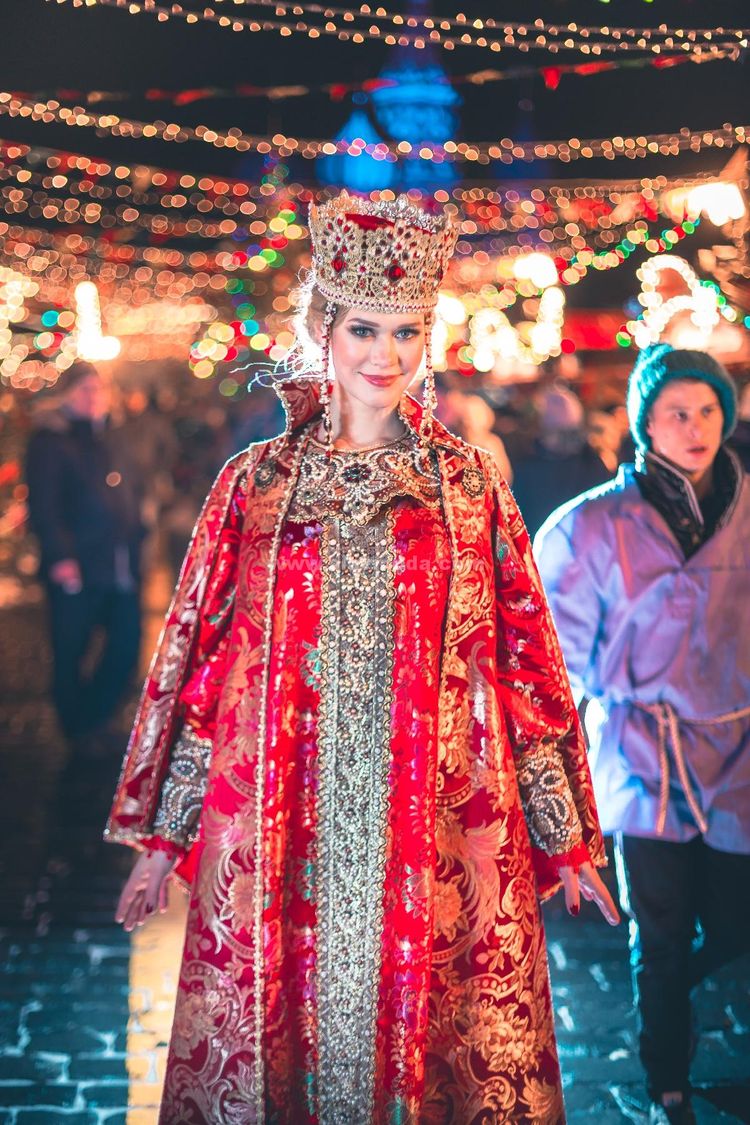
For sewing festive dresses, expensive fabrics were used - linen, chintz or velvet. Additionally, the outfits were decorated with beads, ribbons, and elegant embroidery.
The dresses of the nobility were completely decorated with pearls and stones, now they are used not only by our designers, but also by their European colleagues, among whom the European style is especially popular. The main elements that are used are embroidery with colored threads, stones, beads and gold ribbons.

Ethno-style things are not cheap. The Levadnaja Details brand, for example, uses silk and Italian linen for their tailoring. Every wardrobe item has beaded embroidery and semi-precious stones.
It takes about a month of work to make, which the craftswomen do with their own hands.
Now things with a touch of ethno-stylistics can be seen on all world catwalks, and secular lionesses gladly dress them for receptions and receptions. The style is also popular among modern mothers who buy outfits with ethnic motives for their daughters.
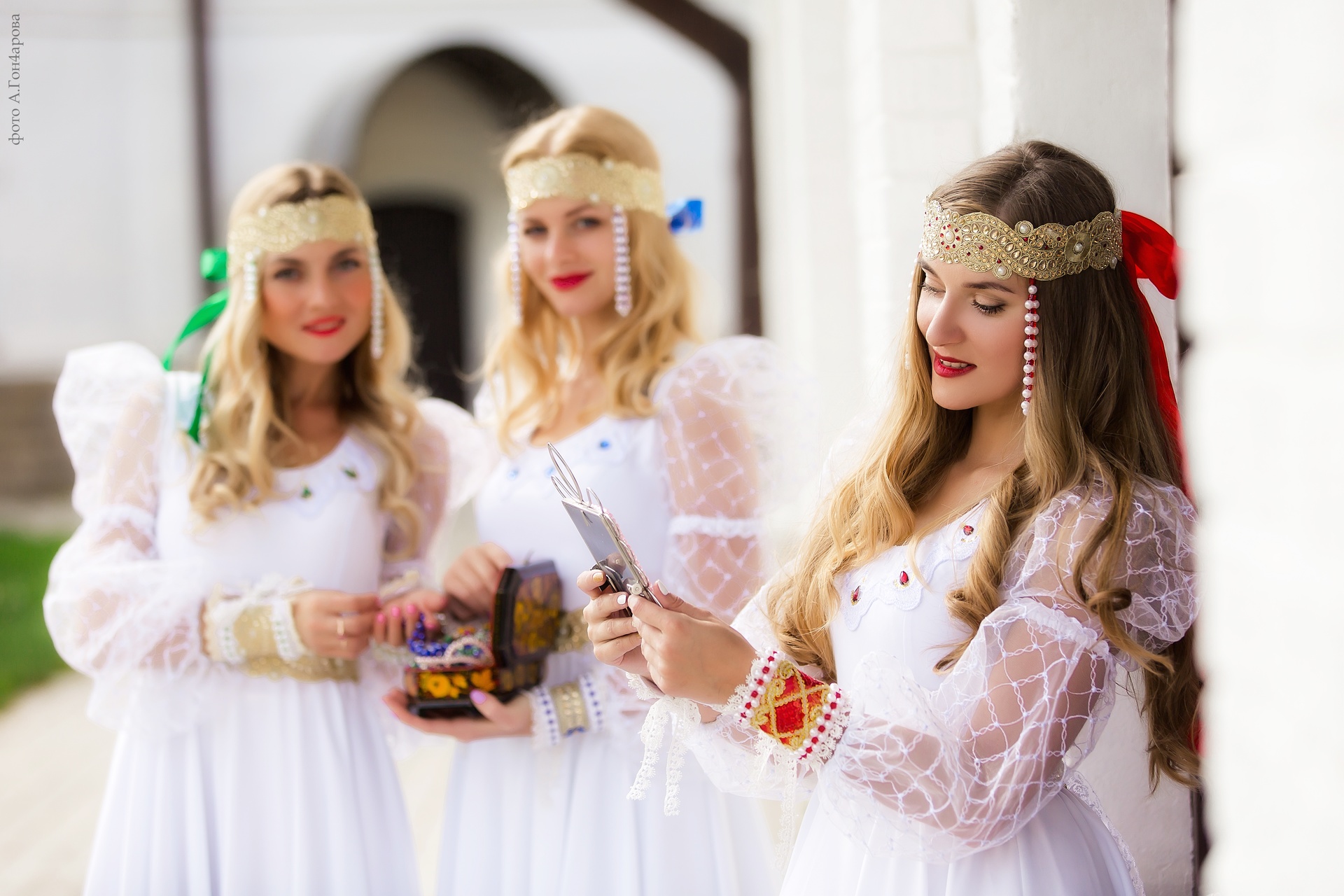
Ethno-style clothes for girls
Many parents really like to see their daughters in the amazingly beautiful image of the fabulous Alyonushka. Decorative elements such as ribbons, embroidery and beads add a colorful look. The more such elements, the brighter the clothes of a little fashionista will turn out.
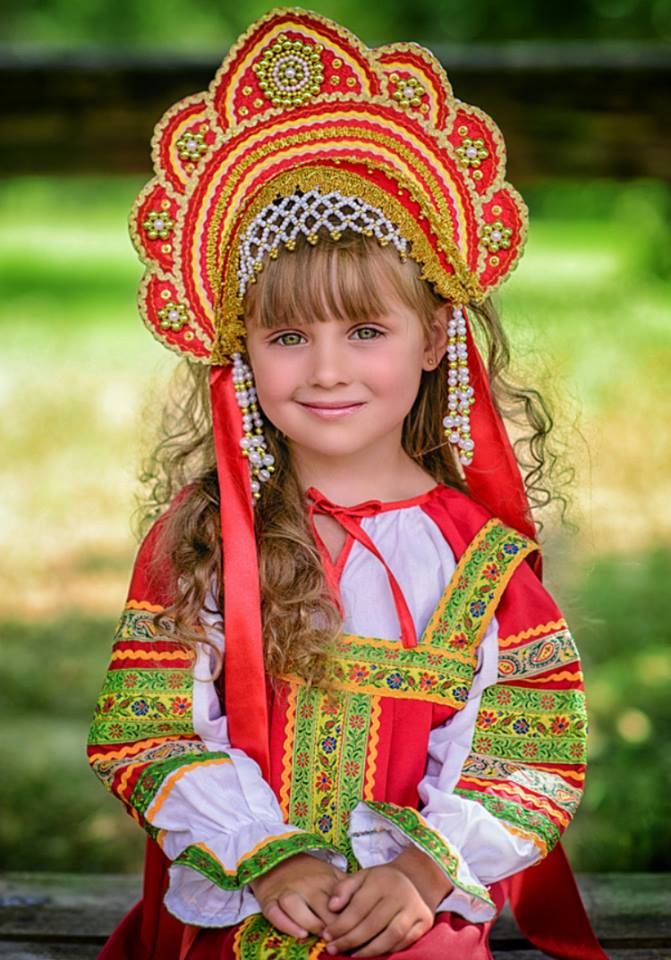
Designers offer children's suits in a complete set, that is, a traditional shirt, sundress and kokoshnik, made in the same design style.
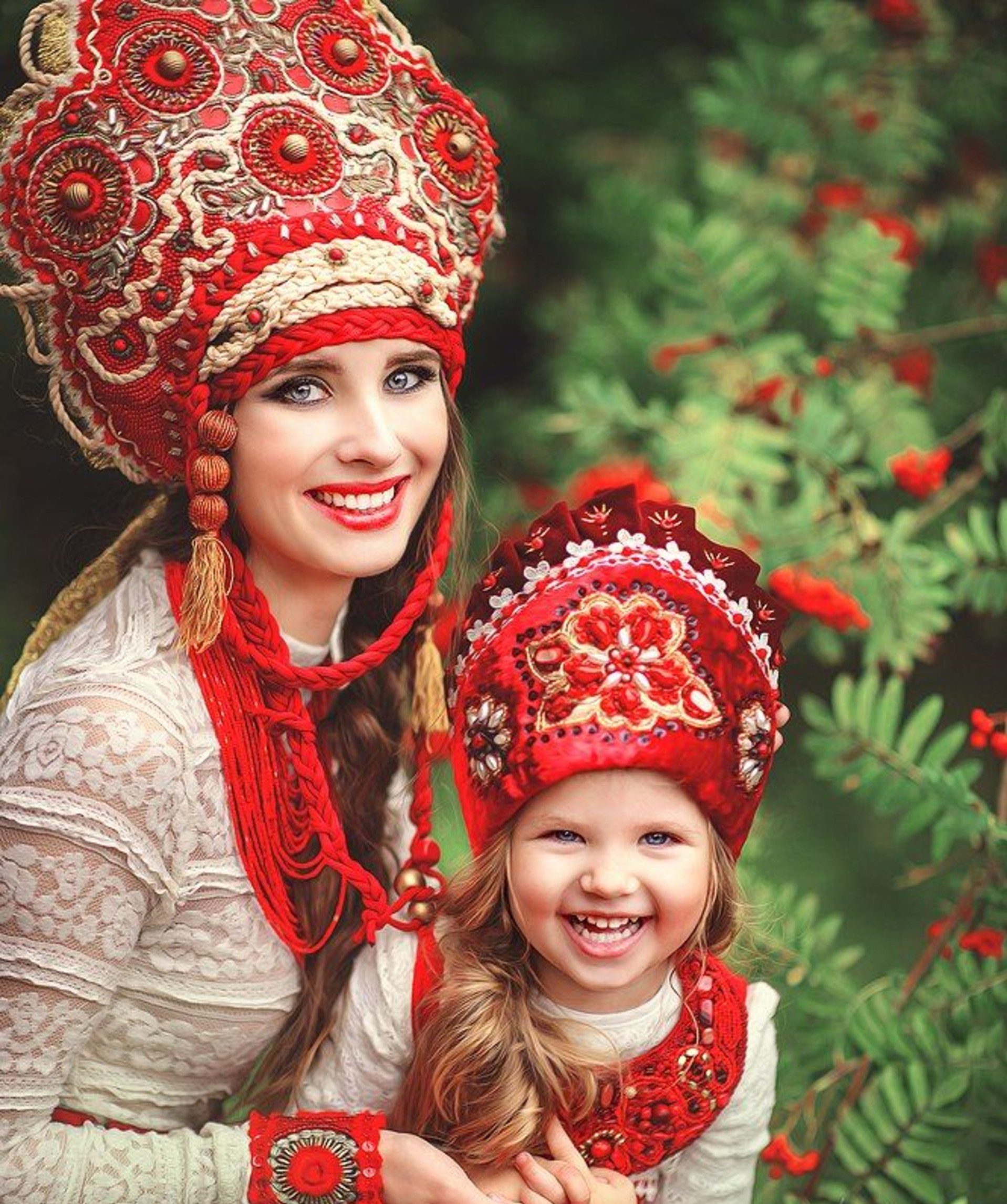
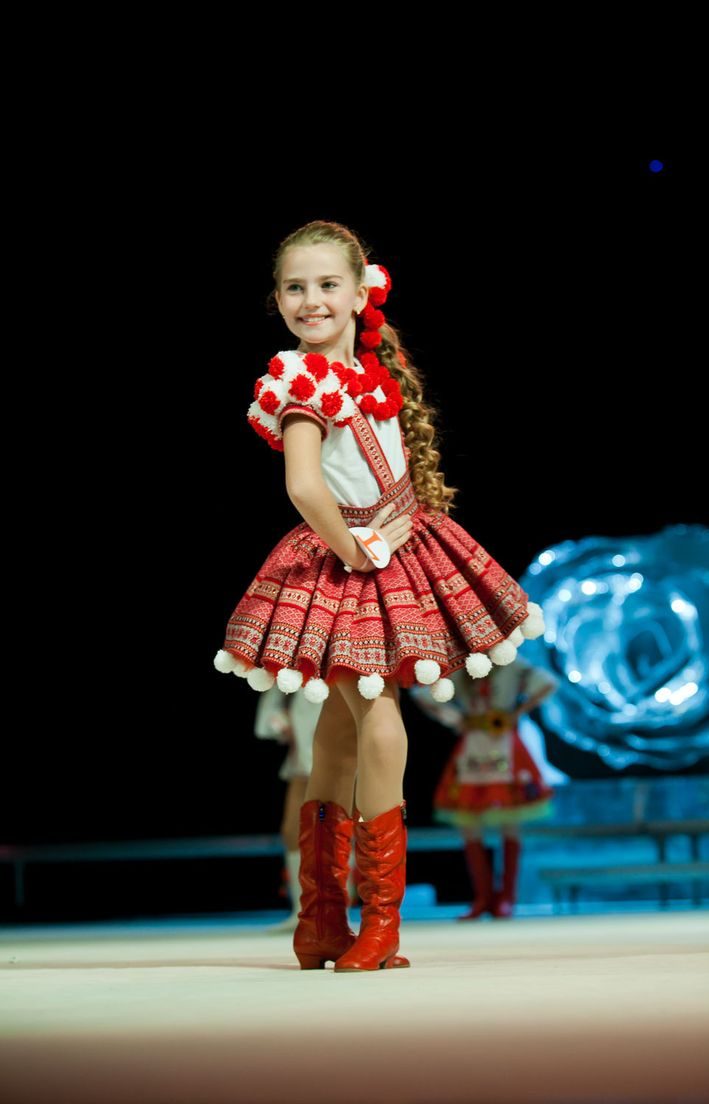
Textile
As in the old days, so now, exclusively natural fabrics are used for sewing Russian folk costumes. Depending on how much to expect for the purchase or tailoring of a suit, you can choose linen, silk, velvet, brocade, satin.
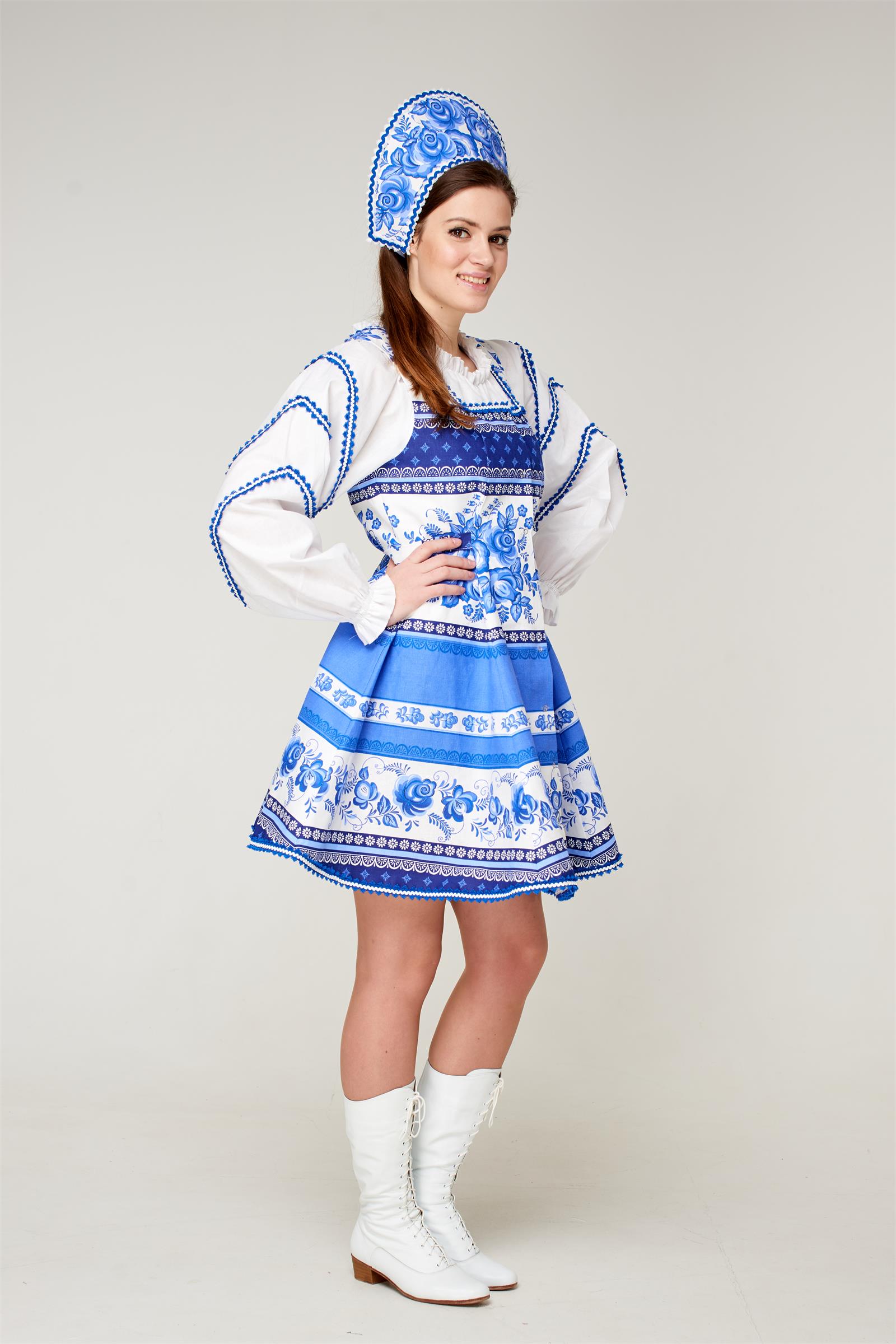
The clothes of our ancestors immediately showed the level of well-being of the woman wearing them.
Purchase or rental
Buying or renting is, of course, a personal matter. If clothes are needed for a theme party, then rental is a more appropriate choice. If you are a member of a choir performing Russian folk songs, then, of course, you will have a purchased costume in your wardrobe, and more than one.
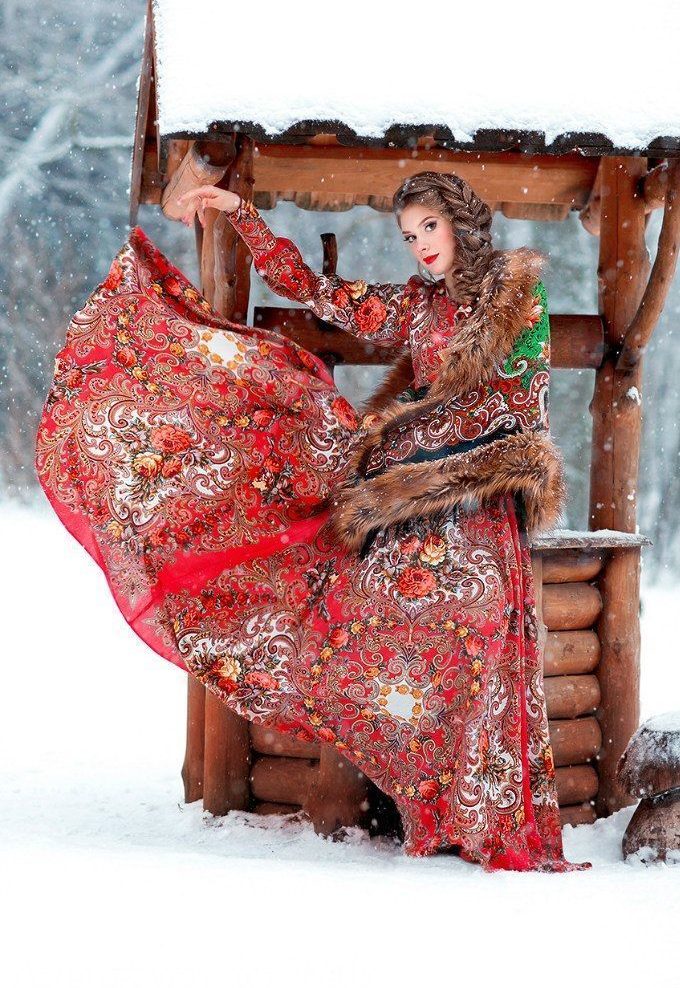
You can buy sets of women's folk clothing at the Moscow company "Irma Decor". The average cost is 7000-8000 rubles.
Online stores offer modern dresses made in Russian style. Their average cost is 4000 rubles. Daily rental of the outfit will cost from 2,000 rubles.

Amazing variety
Despite the main rules of tailoring the primordially Russian costume, its versatility is amazing.Both in the old days, and in our times, craftswomen-needlewomen put their soul into their work, endowing clothes with a special inner radiance.
For comparison, we offer a peasant costume and a set of clothes for the nobility.
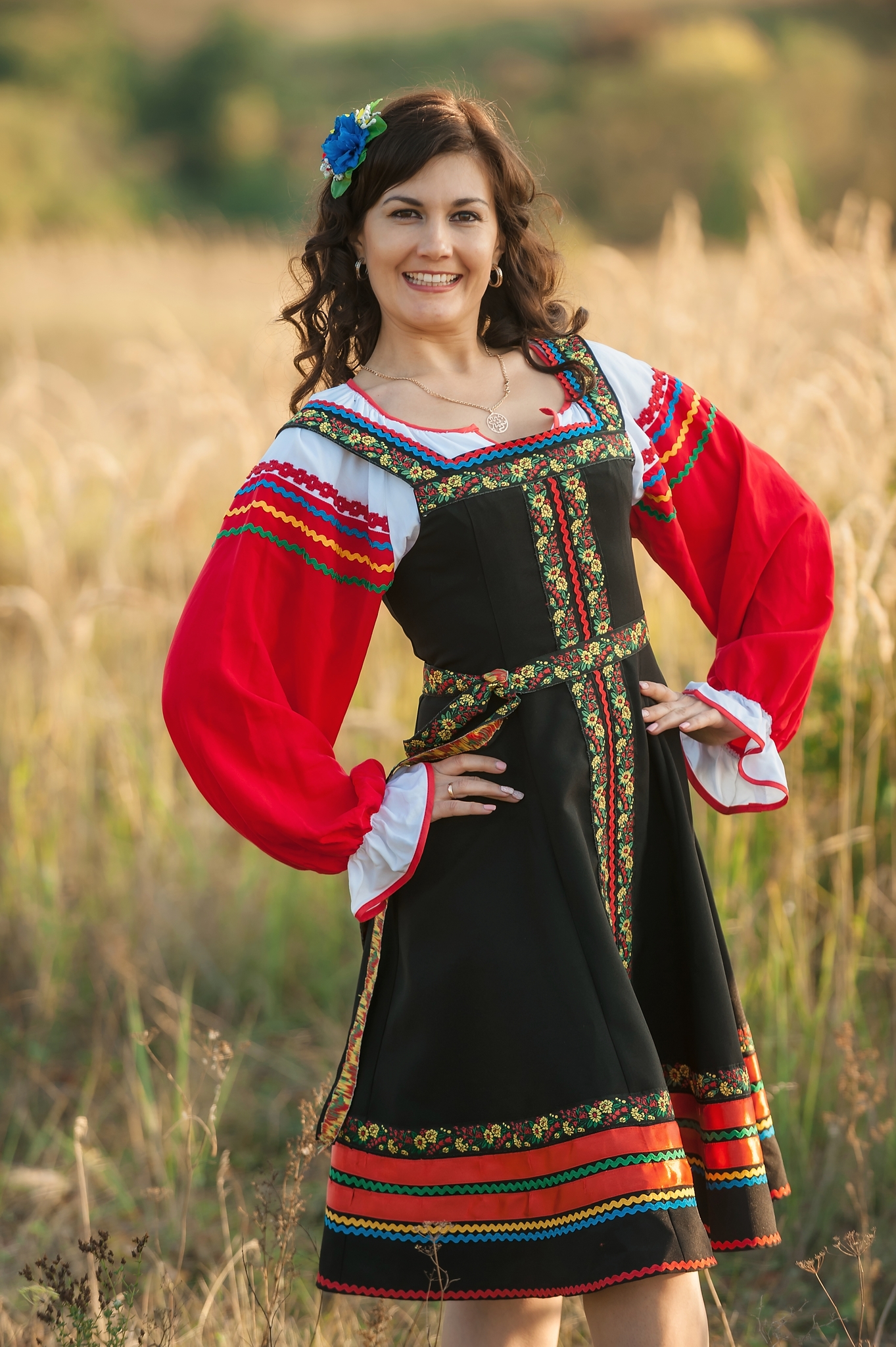


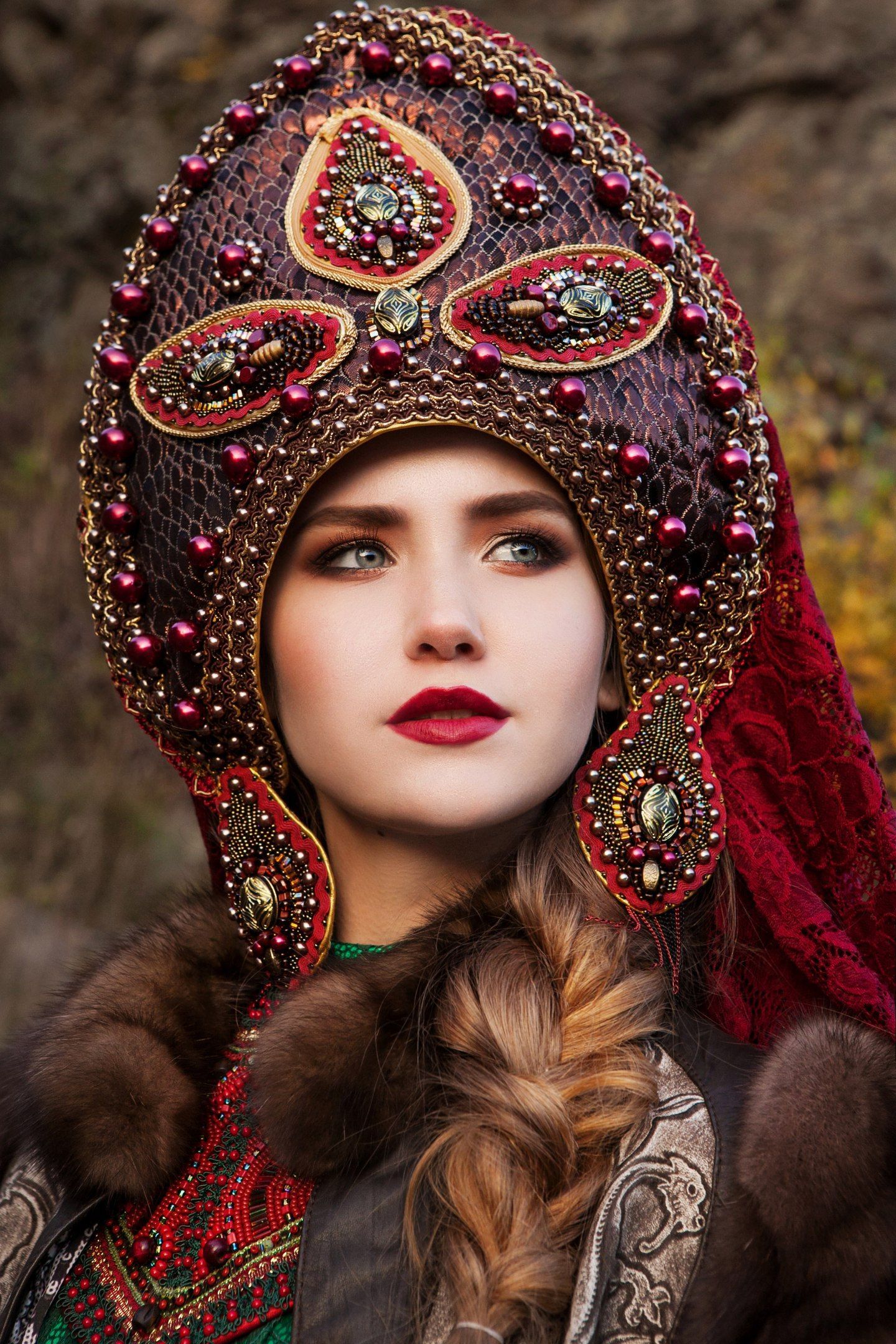

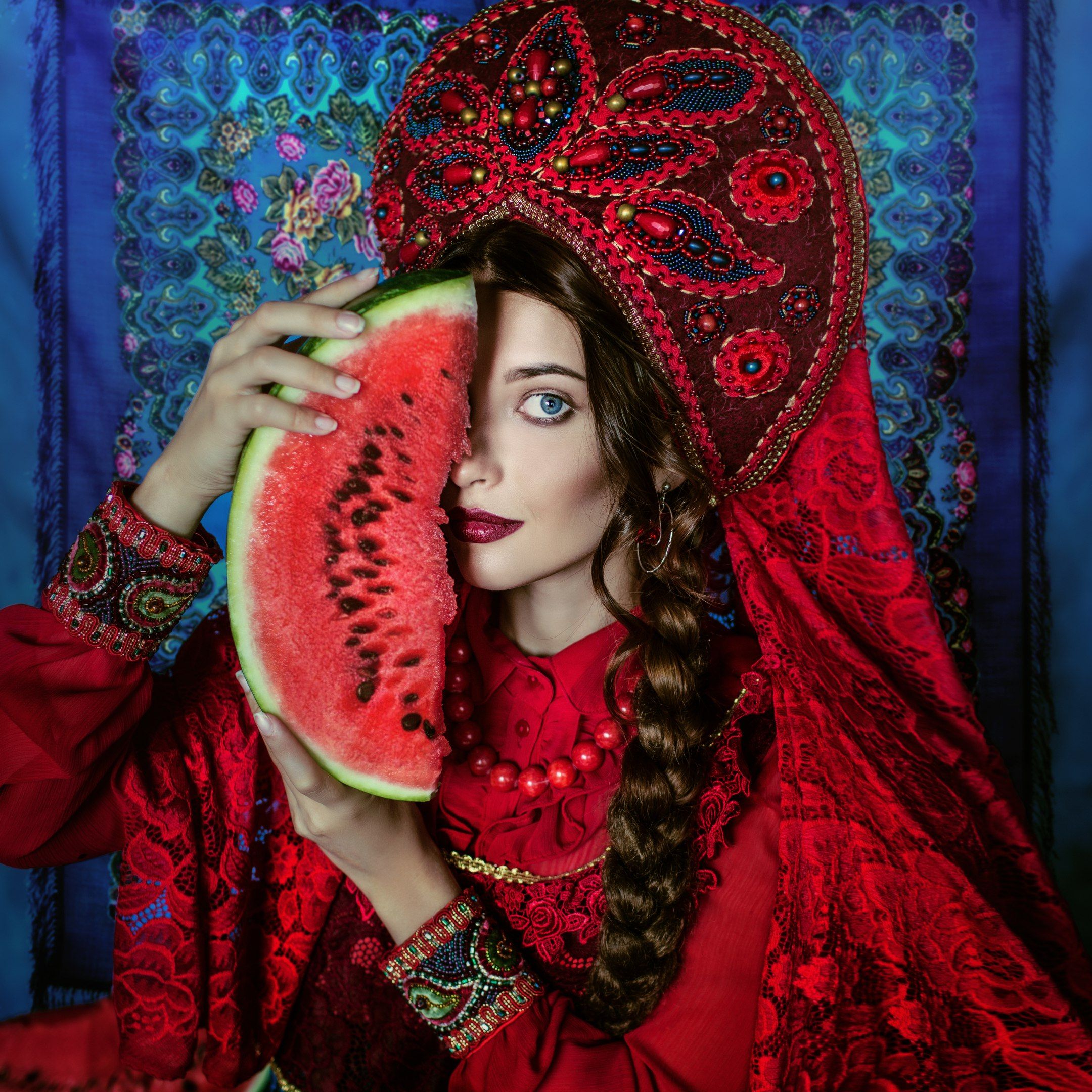

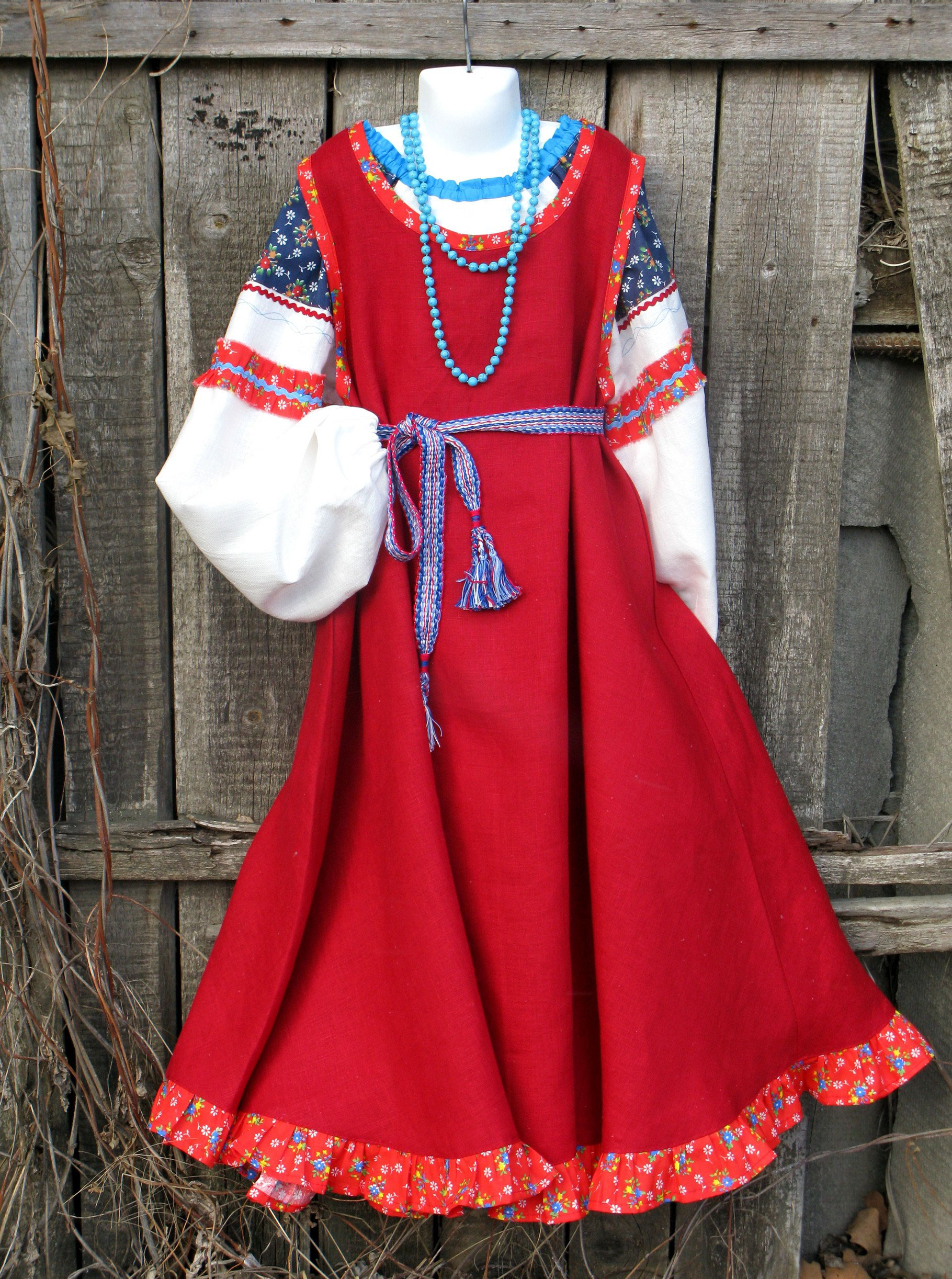
Summing up
This is how the traditions of sewing folk women's costumes in Russia have been developing for centuries.
Our ancestors, who laid the incredibly high potential of tailoring and finishing techniques in clothes, created a masterpiece that is admired not only by Russian fashion designers, but also by couturiers of European countries in our time.
